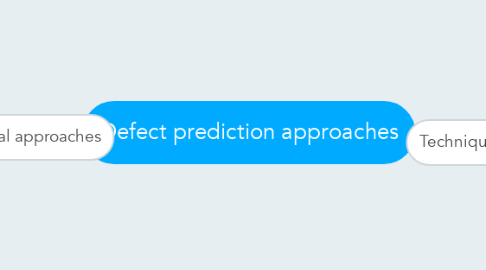
1. General approaches
1.1. Change log approaches
1.1.1. use process metrics extracted from the versioning system, assuming that recently or frequently changed files are the most probable source of future bugs.
1.2. Single-Version approaches
1.2.1. assume that the current design and behavior of the program influences the presence of future defects
1.3. Effort-Aware Defect Prediction
1.3.1. Several recent works take into account the effort necessary to inspect a file during defect prediction. The time spent reviewing a potentially buggy file depends on its size and complexity
2. Techniques
2.1. Process metrics
2.1.1. Number of revisions
2.1.2. Number of refactorings
2.1.3. Number of fixes
2.1.4. Number of authors
2.1.5. Number of lines added and removed
2.1.6. Churn
2.1.7. Change Set Size
2.1.8. Age
2.2. Previous defects
2.2.1. Bug fixes
2.2.2. Bug categories
2.3. Source code metrics
2.3.1. Lines of Code
2.3.2. Object Oriented
2.3.2.1. Number of other classes that reference the class
2.3.2.2. Number of other classes referenced by the class
2.3.2.3. Number of attributes
2.3.2.4. Number of public attributes
2.3.2.5. Number of private attributes
2.3.2.6. Number of attributes inherited
2.3.2.7. Number of lines of code
2.3.2.8. Number of methods
2.3.2.9. Number of public methods
2.3.2.10. Number of private methods
2.3.2.11. Number of methods inherited
2.3.3. Chidamber & Kemerer
2.3.3.1. Lack of cohesion in methods
2.3.3.2. Coupling between objects
2.3.3.3. Number of children
2.3.3.4. Response for class
2.3.3.5. Depth of inheritance tree
2.3.3.6. Weighted method count

